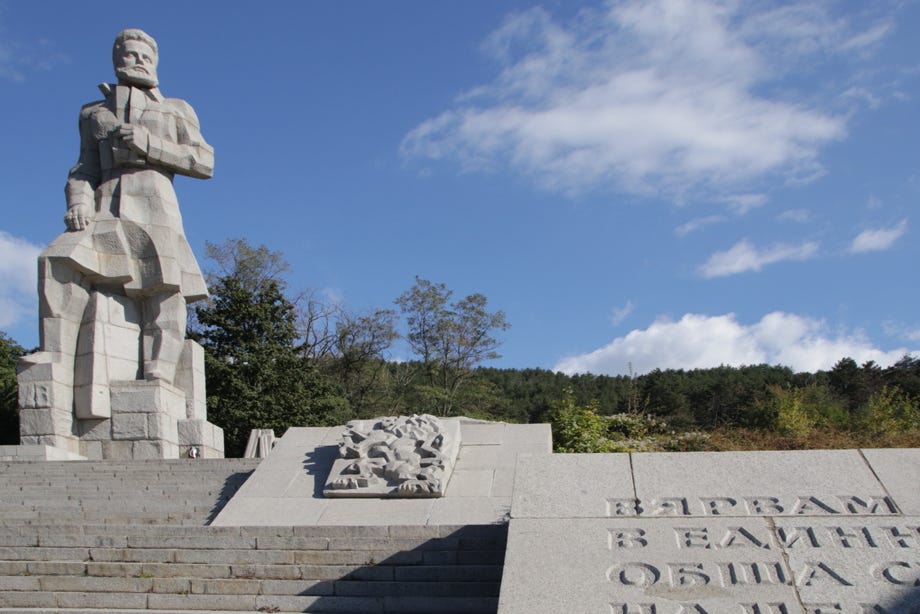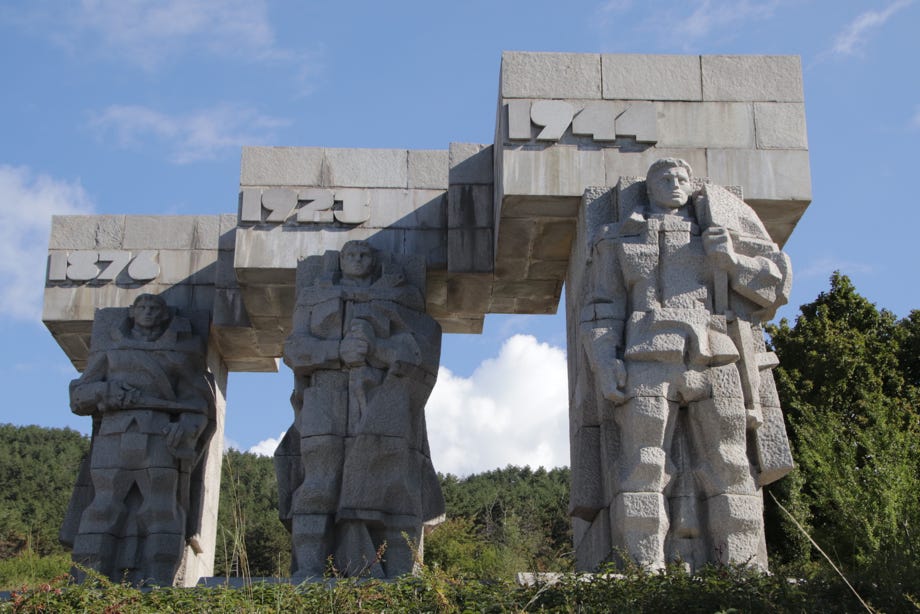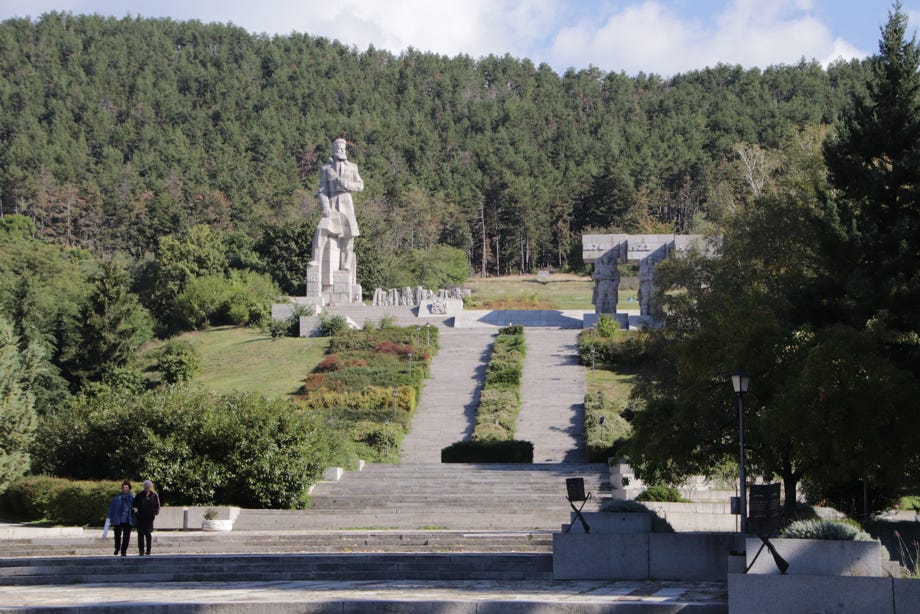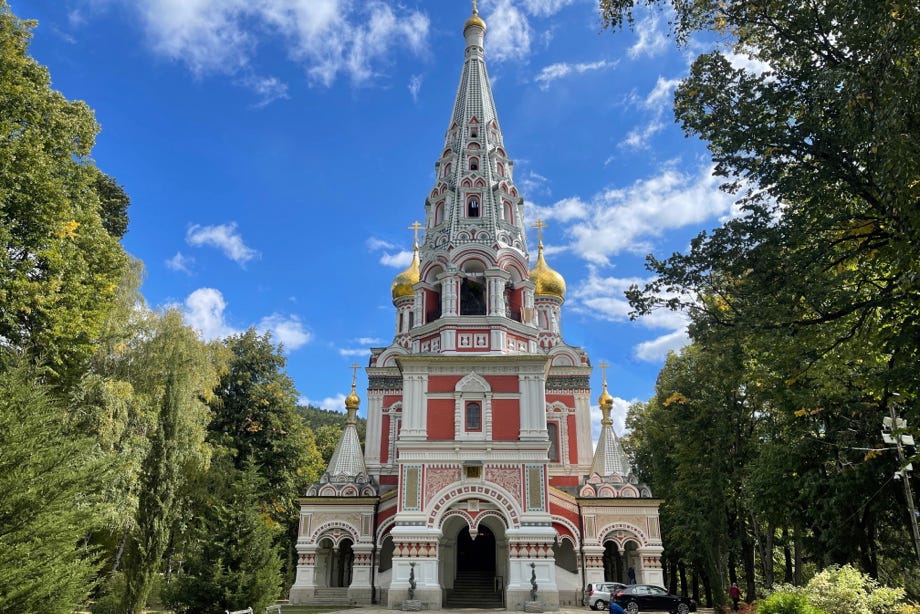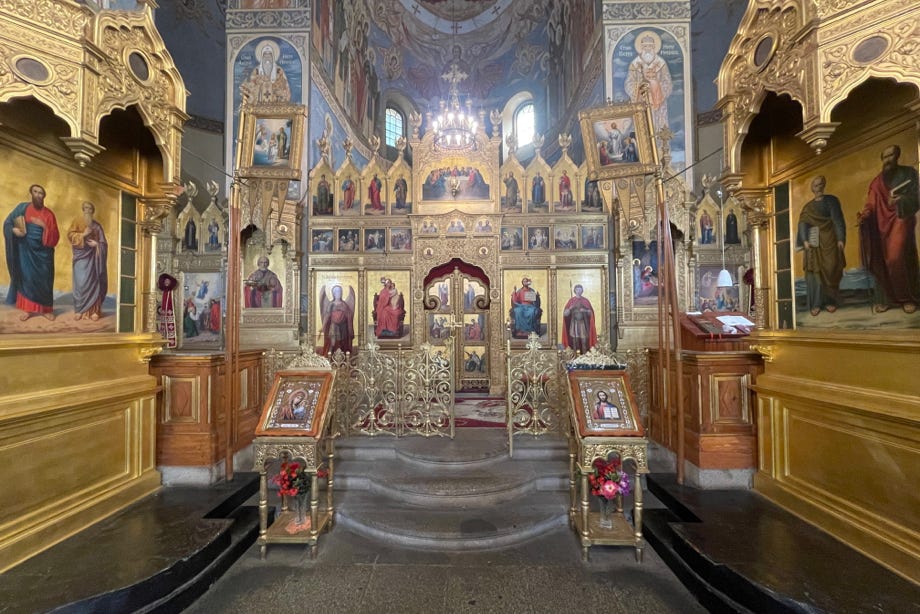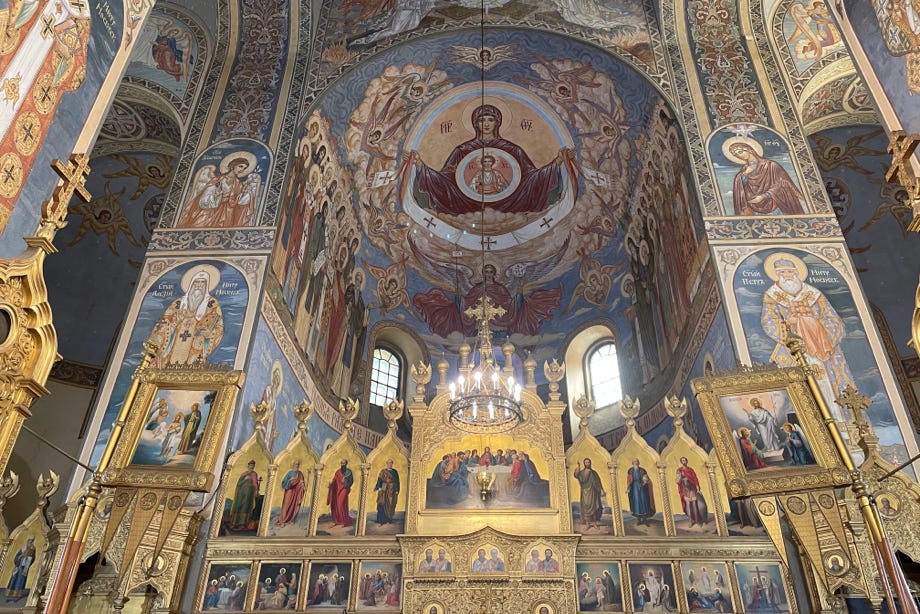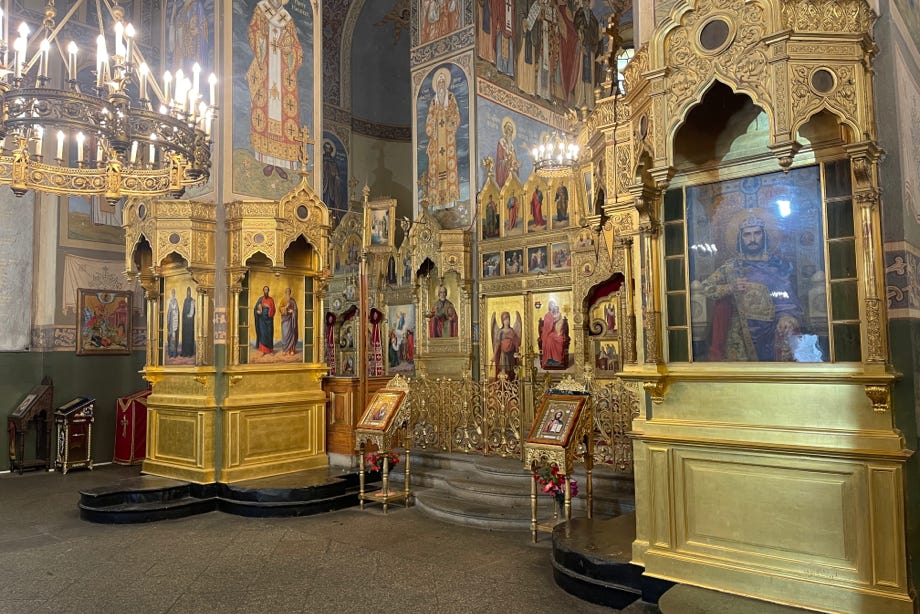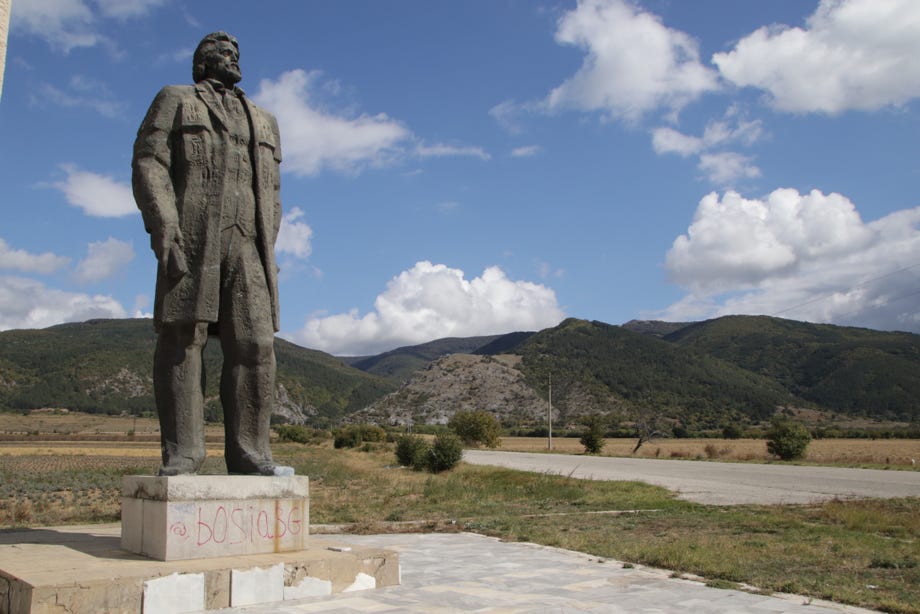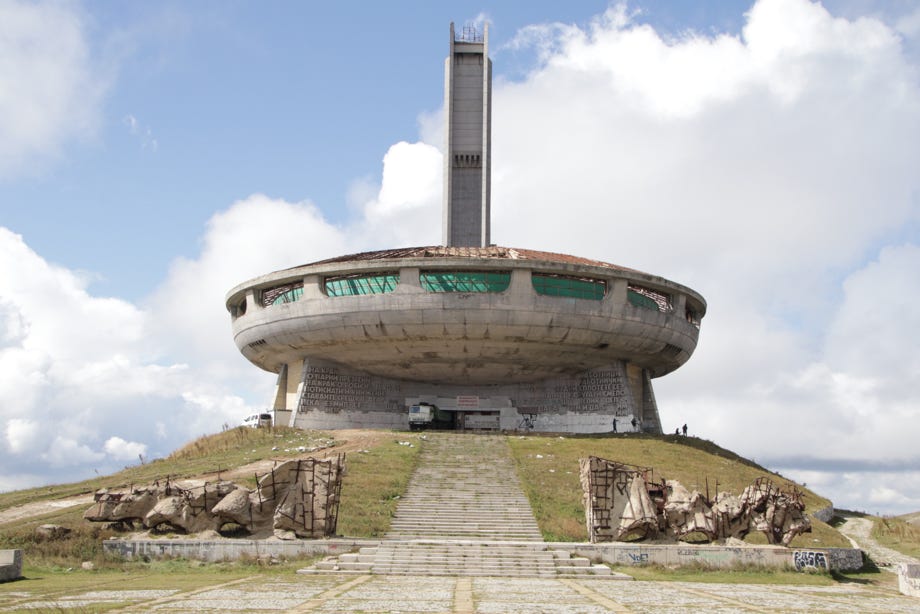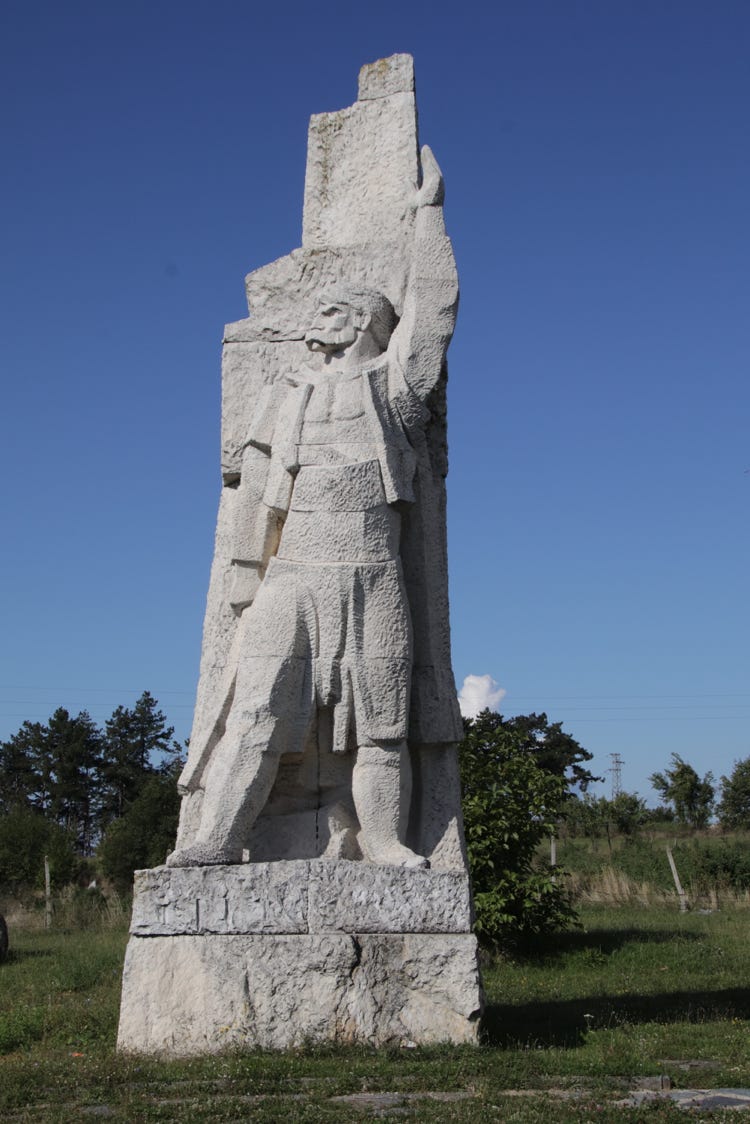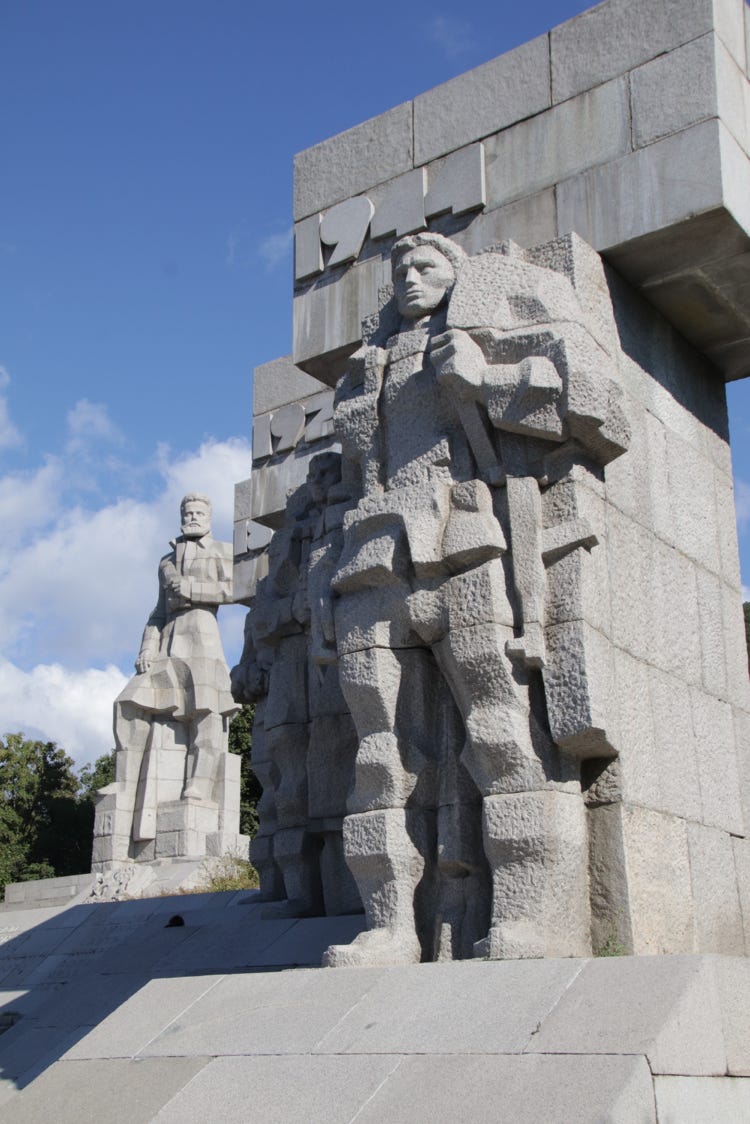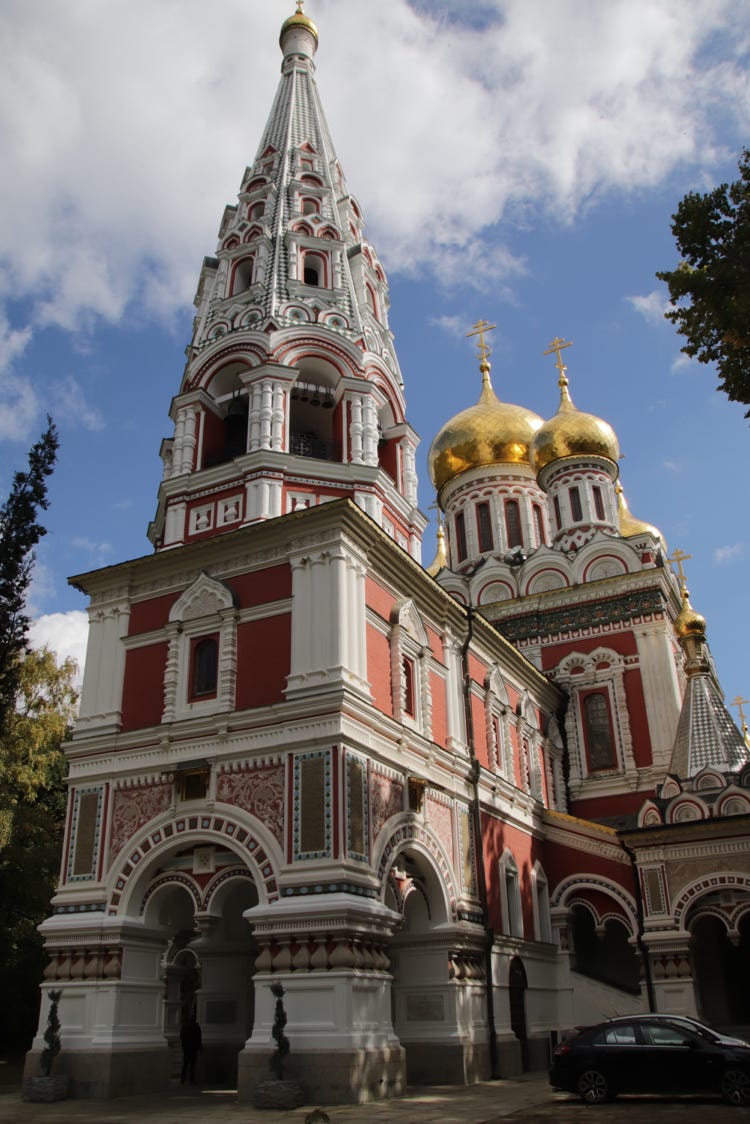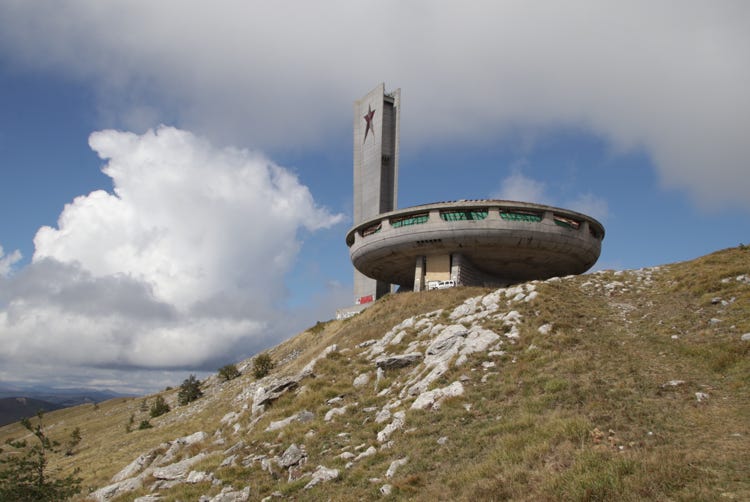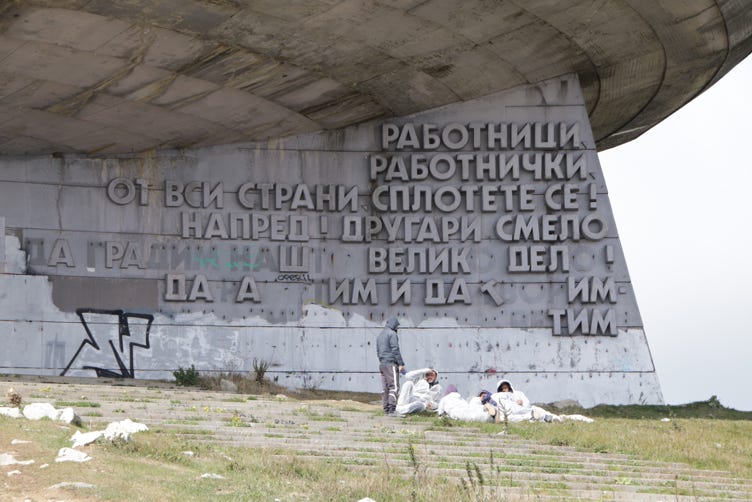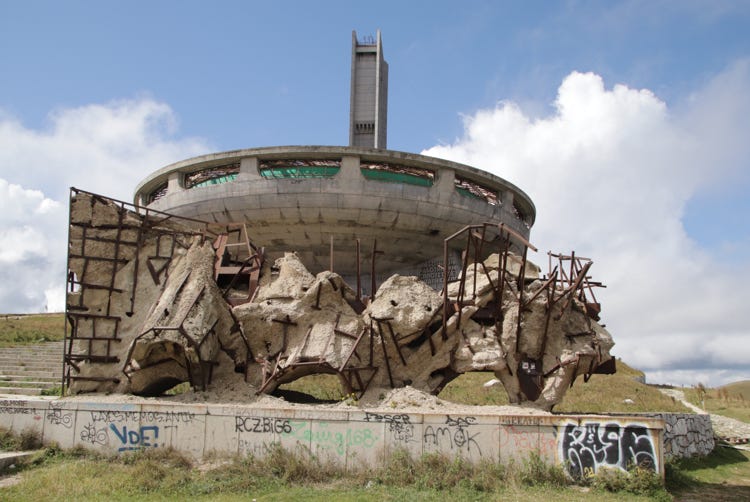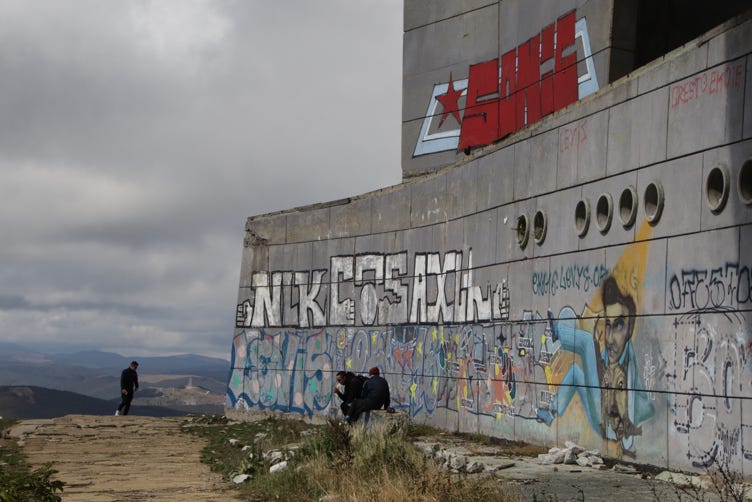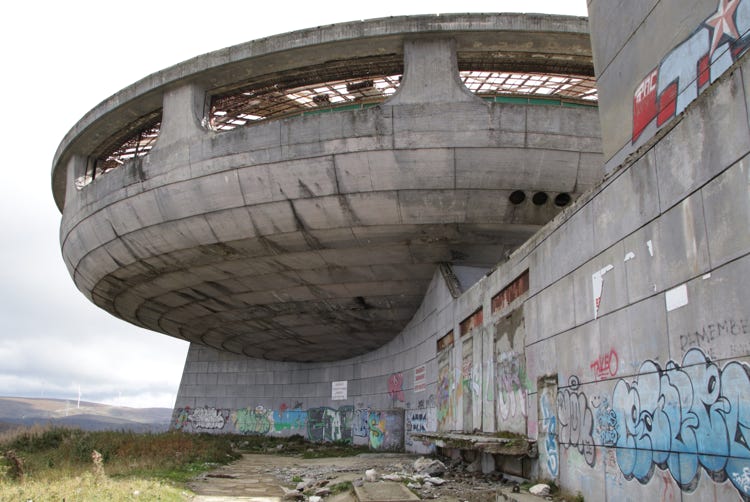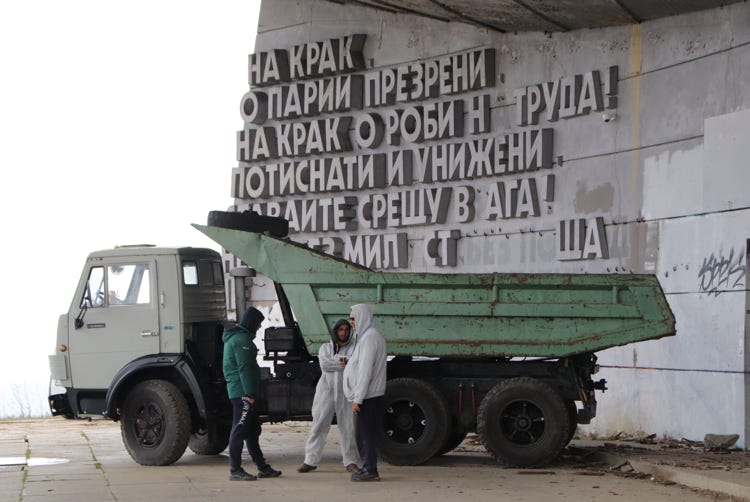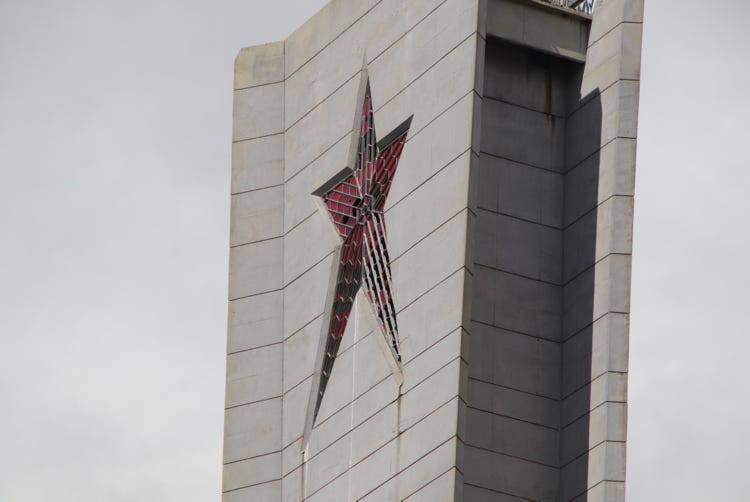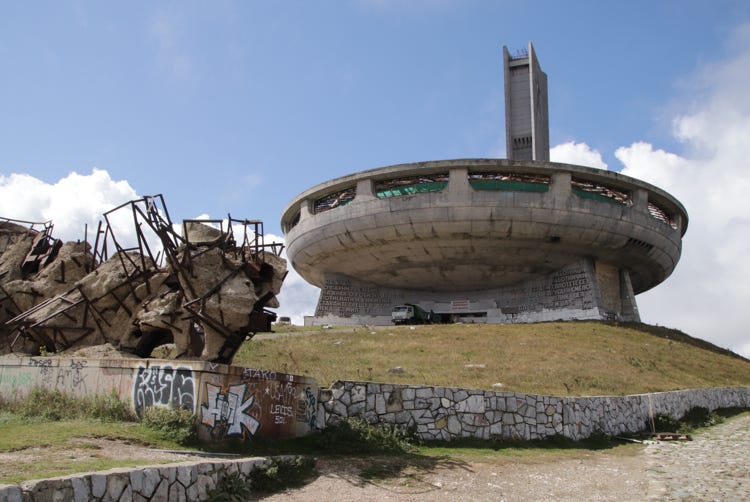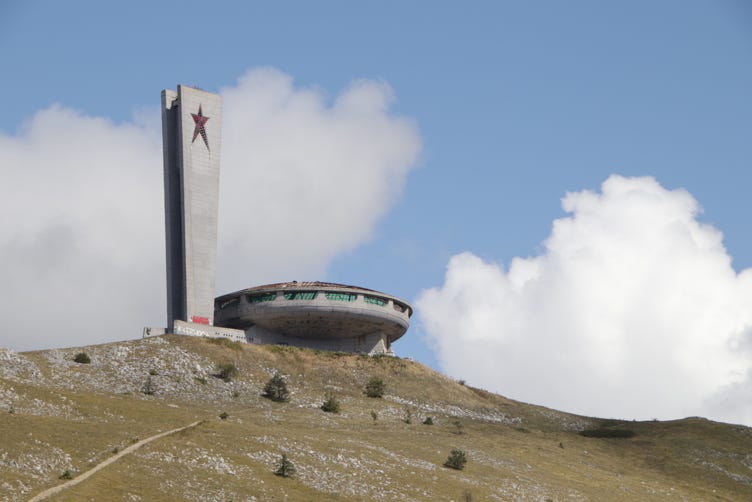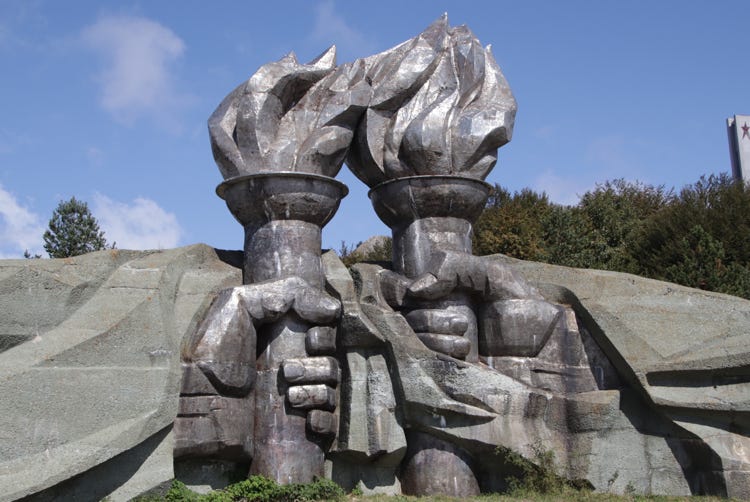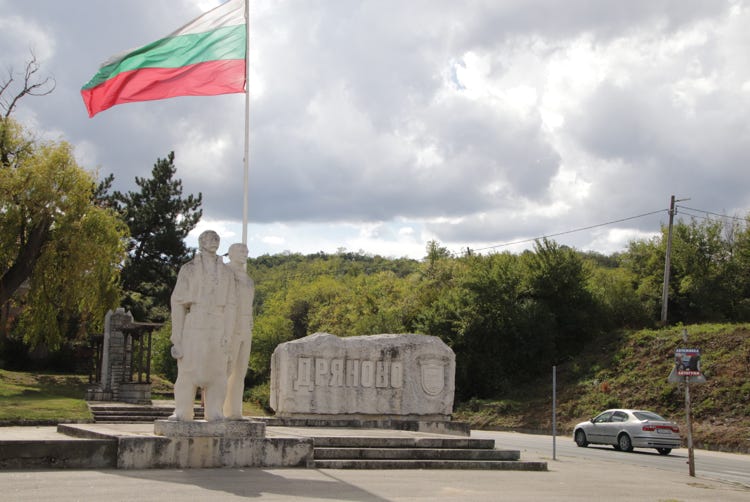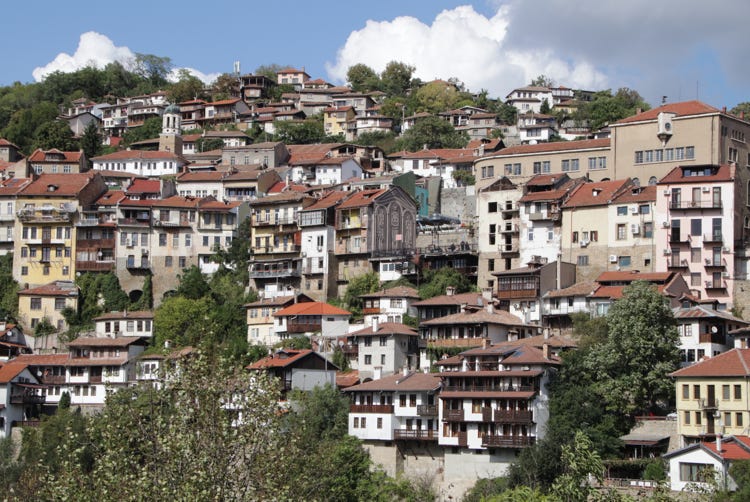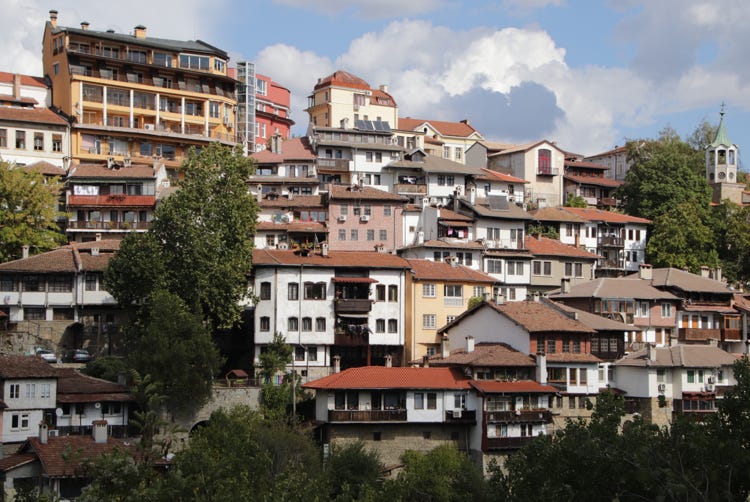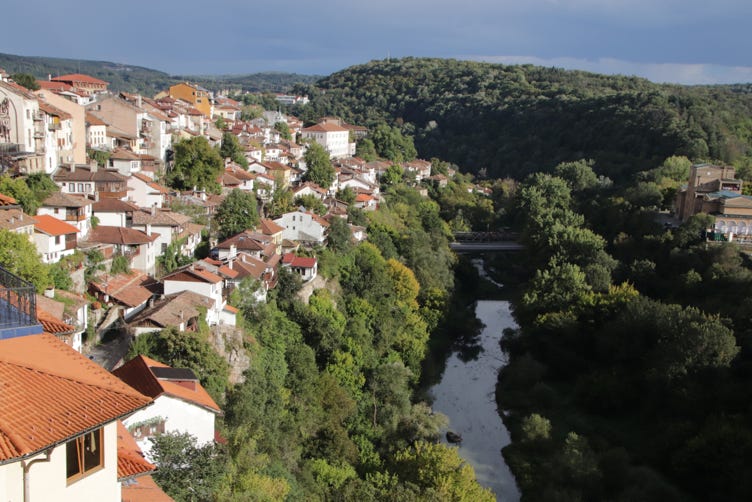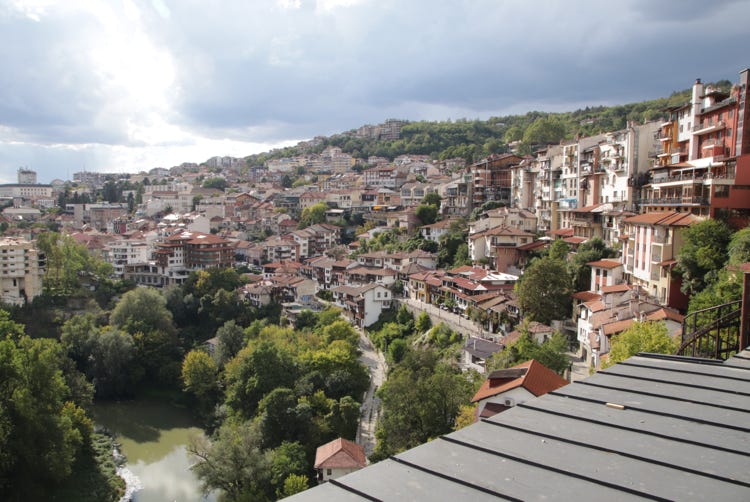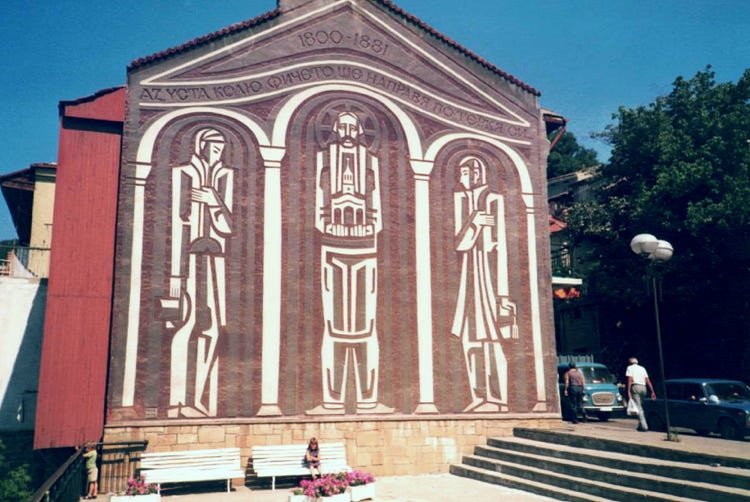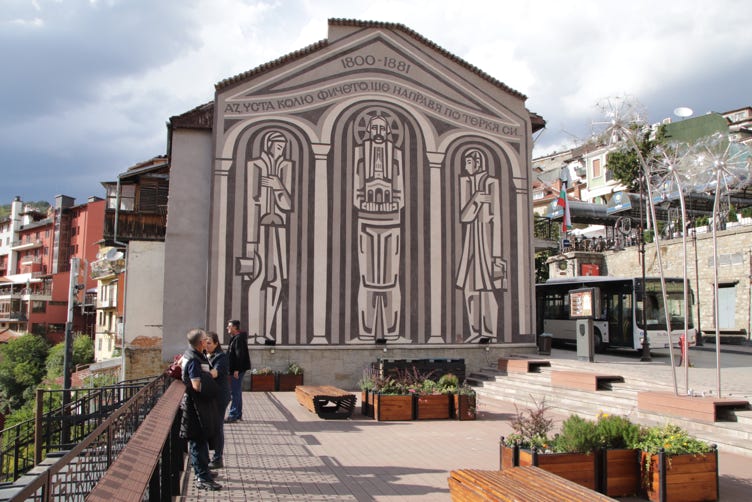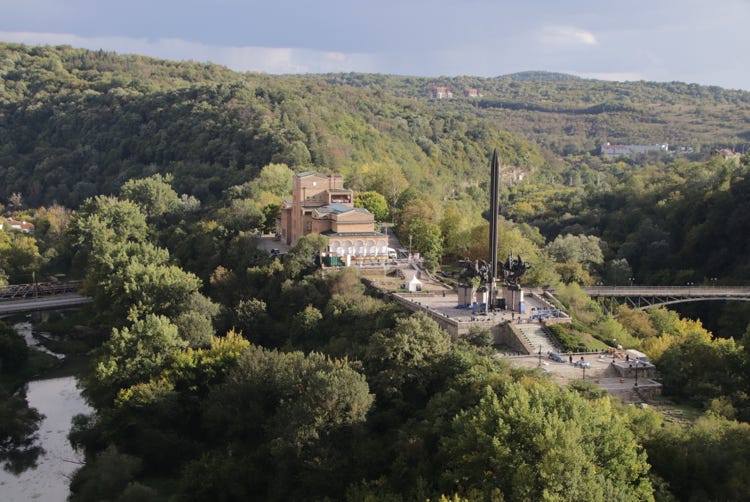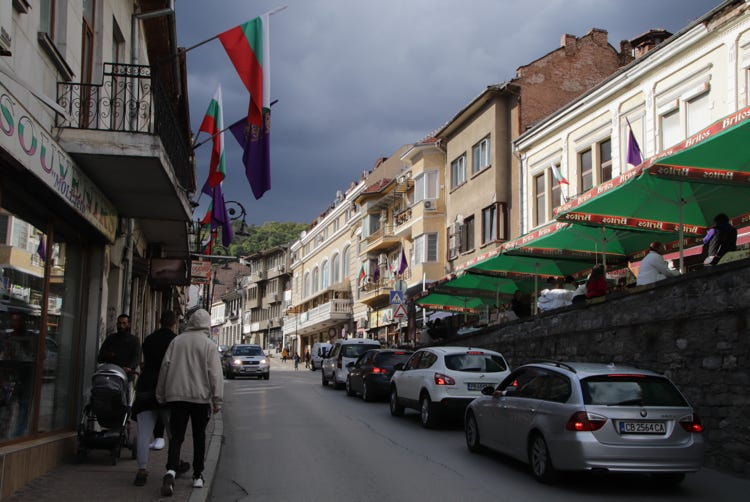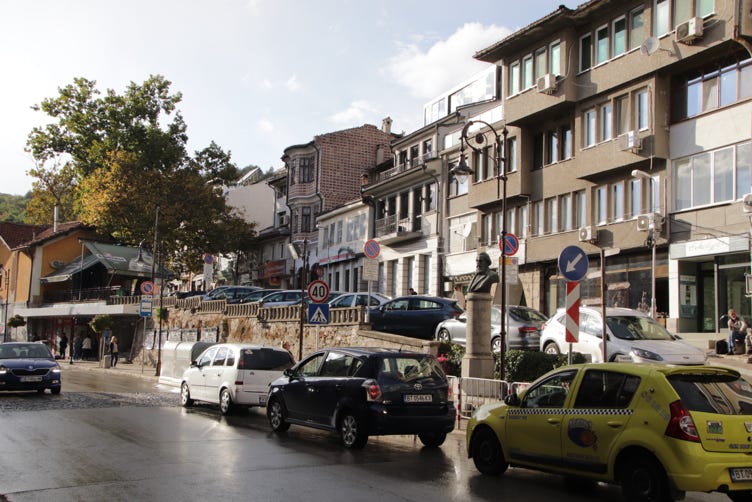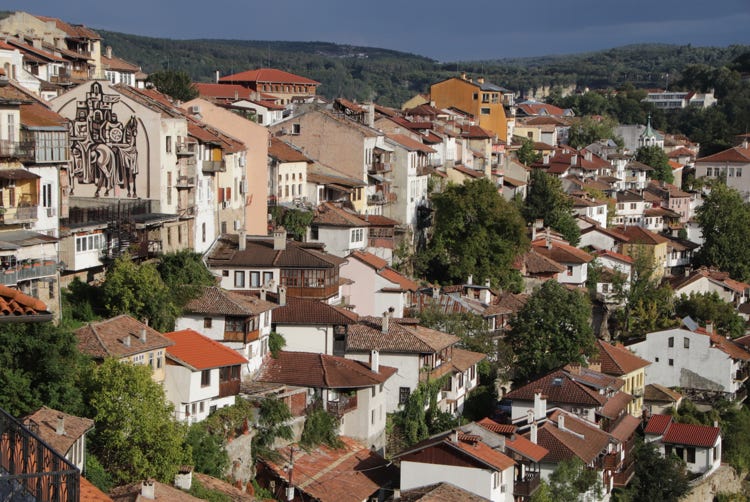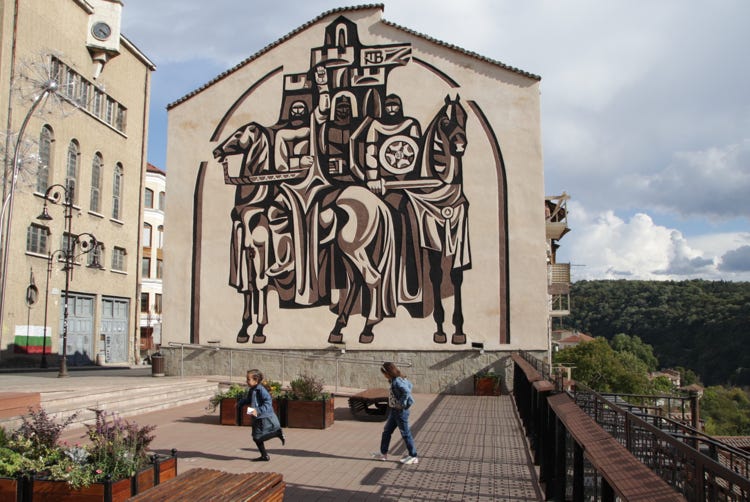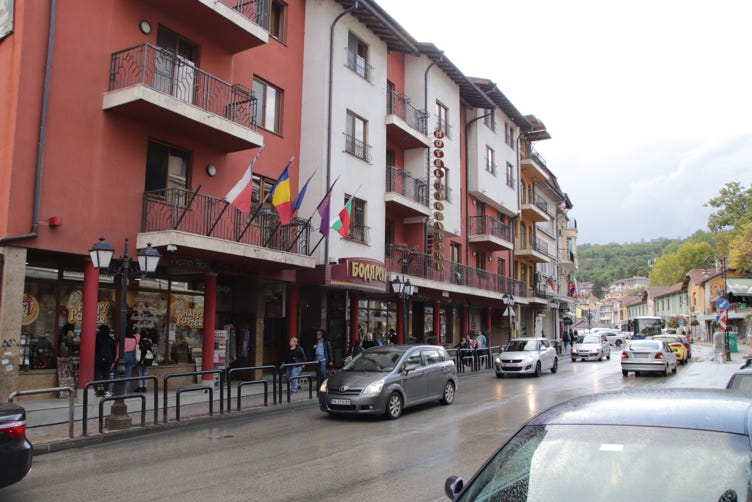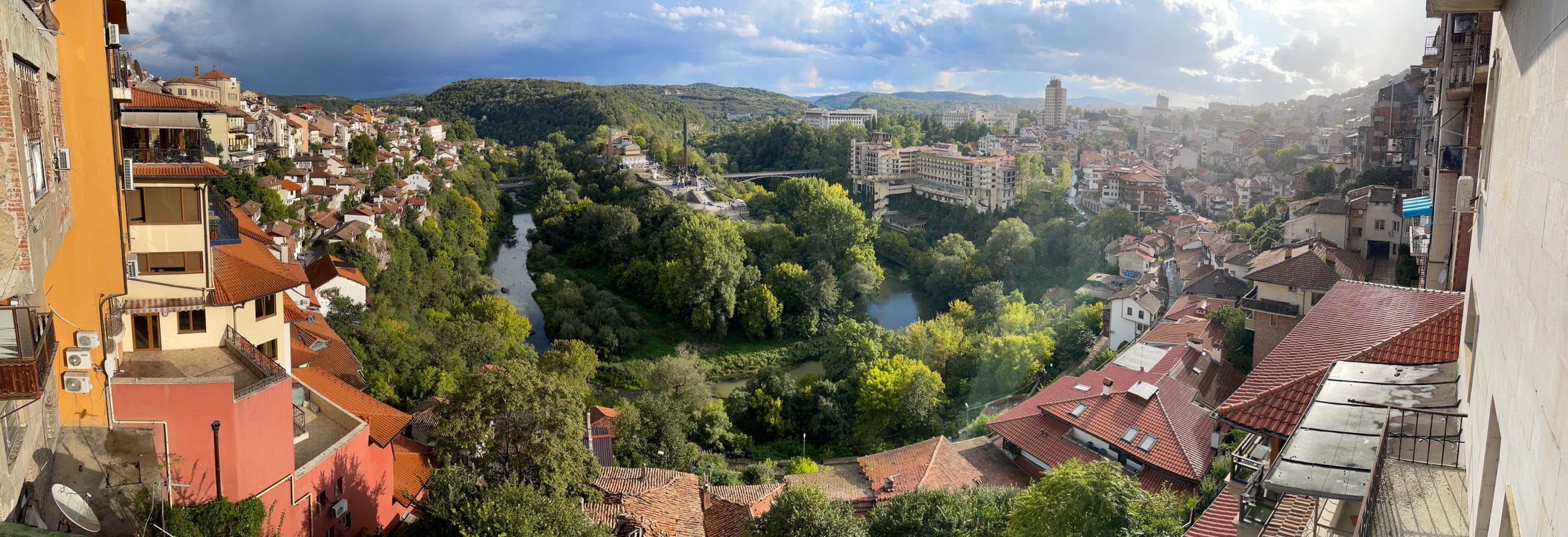
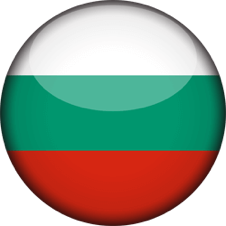
Plovdiv to Veliko Târnovo

Distance travelled = 215 kilometres driving by road and 10.2 kilometres walking (13,600 steps).
There are fewer socialist monuments in Bulgaria today compared with the situation when I travelled here in 1987. However, monuments were the most noteworthy features on the drive from Plovdiv to Veliko Târnovo today, and what they lacked in quantity they more than made up for in quality.
I set off from Plovdiv at a little after 9:00am, intentionally leaving fairly early even though the distance to be travelled today was not that large. The reason was that rain had been forecast during the afternoon, and I wanted to try and cross a hilly region before the rain started.
Driving north from Plovdiv, my first stop was in the small town of Kalofer (Калофер). Entering the town there was a small but impressive monument to a gun-wielding partisan fighter, but my real destination in Kalofer was in the centre of town – the huge monument to Bulgarian poet and revolutionary, Hristo Botev (Христо Ботев). Botev was born in Kalofer, and he played a major role in the April Uprising of 1876. The monument was completed in 1986, and at the insistence of the Bulgarian Communist Party, three soldiers were added with the dates 1876, 1923 and 1944 – significant years for the advance of Communism in the country. The monument is huge – it extends up a hill for the full radius of the town around it – but unfortunately for my morning visit, the three soldiers had obviously been designed to pick up the afternoon light.
My second stop involved a short diversion off the main road into the village of Shipka (Шипка) to see the Nativity Memorial Church. We had called in to see this beautiful Russian-style church when we drove through in 1987, and it looks little different now to then apart from the growth of several surrounding trees.
A short drive south from Shipka brought me to an intersection marked by a monument to Dimitar Blagoev, the Bulgarian political leader and philosopher who founded the Marxist Social Democratic Party. This intersection marked the point where I turned off the main road to follow a mountain pass to what I expected would be the “main event” of today’s drive, the Buzludzha Monument (Паметник Бузлуджа) at the 1441 metre high summit of the mountain pass.
Shaped like what one might imagine a UFO might look like if it landed next to a high concrete shard with a glass red star, the Buzludzha Monument was built as a conference centre and assembly theatre, lined inside with spectacular mosaics covering almost 1,000 square metres comprising over two million mosaic tiles. Since the fall of Communism, the facility has fallen into disrepair. The interior became so dangerous because of broken glass and falling concrete that entry is now firmly prohibited. Nonetheless, the exterior is an impressive sight, especially given its location, and I was not the only visitor to make the trek to see it today. It was, however, a bitterly cold experience. The temperature was officially about 5°C, but with strong winds blowing in from the nearby snow-capped mountains, I’d describe conditions as “very chilly”.
I have heard that plans exist to restore and re-open the building as a history museum. That would be fabulous, and indeed there was a team of workers present at the site when I visited today, none of whom did any work whatsoever though (maybe they were locked out too?).
After spending a little over an hour exploring the Buzludzha Monument, I continued my drive, stopping after only a few minutes to look at “The Torches” monument. This immense metal monument portrayed a pair of hands holding up flaming torches, and looked truly impressive in the intermittent bursts of sunshine through the rapidly moving clouds that were starting to gather threateningly overhead.
I made just one more quick stop as I approached my destination, this being on the outskirts of Dryanovo (Дряново) to photograph a nice roadside monument, and then drove into Veliko Târnovo (Велико Търново) at about 3:15pm. Interestingly, when we were here in 1987, “Велико Търново” was romanised as “Veliko Turnovo”, but the “u” now seems to have become an “â”).
Veliko Târnovo is an old, colourful town that is built on the steep sides of a canyon cut by a large meander of the Yantra River. Neolithic people lived there as long ago as 5500BC, and a succession of civilisations, including the Thracians, Romans, Byzantines, Slavs, Ottoman Turks and Bulgarians have all left their marks on the modern town.
The first place I drove to was Asenova Monument, built in 1985 on the inside of the meander bend. This great location shows the whole town as a grand panorama that rises up on the hills on the other side of the river. Unfortunately, the area was closed as workers were setting up a sound-and-light show that has apparently brought huge numbers of people into the city for tonight’s performance. I was assured, however, that the area would be open again tomorrow.
I decided to head to my accommodation, the Hotel Bolyarski, located in the centre of town in Ulitsa Stefan Stambolov. I chose this hotel because of its central location with views across the river, and because (rarely in Veliko Târnovo) it claimed to provide free parking.
The hotel’s signage could best be described as discreet, but I found the hotel fairly easily and immediately saw there was nowhere to park, or even to stop the car. I pulled into a nearby bus stop, took out my luggage, and entered the hotel to check if it was the right place (like I said, the signage is discreet) – it was the right place. I mentioned that I was parked in a bus stop and asked if I should move the car before checking in. The very polite young lady at the desk suggested that I should, noting that all their parking spots (both of them) were occupied, but I could try and find paid parking nearby instead.
To cut a long story short, there was no paid parking available, so I drove and parked on a footpath about 650 metres from the hotel, and returned to check in. I showed the receptionist photos of where I was parked, and she said it was illegal as I was on the footpath. However, she had some good news for me – the hotel’s manager had just finished work for the day, opening up a parking spot. I returned to move my car and managed to secure the parking spot (just as a taxi that had been using the spot drove away).
The hotel could best be described as “old style”, and the internet only works (just, and intermittently) out in the corridor – perhaps that’s why a sofa has been provided in the corridor. However, the views are wonderful and I’ve been told that I’ll be able to see and hear the light and sound show when it begins at 9:00pm.
There were alternating spells of sunshine and heavy rain after I arrived in Veliko Târnovo, so my explorations were limited. Nevertheless, I was able to get some good views of the town, frequently during sun showers – enough to whet my appetite for more explorations tomorrow.

